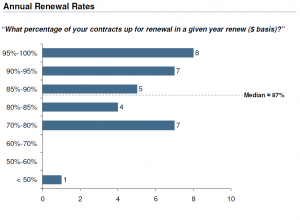Note: Since this involves a personal anecdote, I deviate from normal EMI blog practice and include my name at the bottom of this post. What follows is a cautionary tale about how an organization can destroy customer satisfaction and ultimately threaten revenue by not adhering to these simple rules:
- View your CRM approach and communications through the lens of the customer.
- Understand that satisfaction = reality – expectations: if you set expectations properly through communications, then satisfaction will benefit.
This summer, for the first time, my 11-year-old daughter decided that she really wanted to go with a friend to overnight camp. The camp we selected was one that the friend—and my wife—had attended in the past and enjoyed a great deal. For anyone familiar with overnight camps these days, it will not come as surprise to learn that the cost for a month of camp was not insignificant. My wife and I wanted our daughter to be able to have the experience, though, so decided to sign her up.
About a month before camp was to start, we received a communication that detailed all of the clothes that our daughter would need during her stay. All of a sudden, we were now on the hook for several hundred dollars more, but we appreciated the level of organization that enabled us to ensure that our daughter had what she needed.
But things took a turn for the worse, as detailed below:
- We were informed that in addition to the clothes on the list, we would also HAVE TO purchase several shirts and pants from the camp. No option to opt-out, no mention of that when we signed her up.
- Then, immediately after dropping her off, we were told that in order to communicate with her we had to sign up for an emailing service for which, yes, there was a fee.
- Now, with the end of camp approaching, we have received another communication: on the day we pick up our daughter we must—before we actually get to see her—settle up her “Canteen tab”, which comprises items (e.g., batteries, candy, soft drinks) she “purchased” from the little on-site store as well as the costs associated with day trips (e.g., to a nearby amusement park) planned by the camp.
All these additional costs took us by surprise. Maybe they were buried somewhere in the material provided about the camp, but they certainly weren’t prominently displayed. Moreover, we had no control over the expenditures. I’m confident that opting-out of the amusement park trip was not an option, nor would I have wanted to deprive my daughter of the experience, but since the camp knew it was going to charge me for these things, why didn’t it clearly tell me upfront…or better yet, why not build the charges into the cost of the camp?
And that brings me to what this whole experience should teach us about the importance of thinking strategically about the relationship between poor customer experience and lifetime value. My daughter might come back from camp having had so much fun that alternatives will not be an option next summer, and the camp will retain us as customers. However, the camp’s poorly considered pricing and communication decisions mean that even if my daughter loves it, I don’t. The next time another parent asks me how it was, my answer will be “Well, my daughter thought it was great, but it aggravated me like crazy….”
That’s called negative word-of-mouth and it should be a cause of concern for any business—but especially ones like this camp that relies on referrals for most of its marketing. Now, not only am I on the fence about sending my daughter, but I’m sure the parents I talk to will have second thoughts about sending their children. Avoiding this problem wouldn’t have involved any loss of profit for the camp; all it needed to do was follow the rules laid out at the top of this post.
Anthony Nygren

